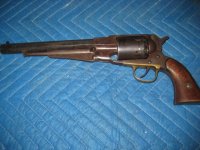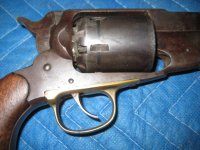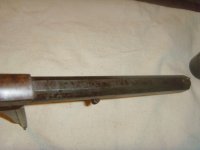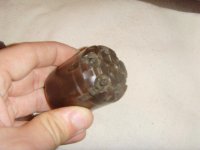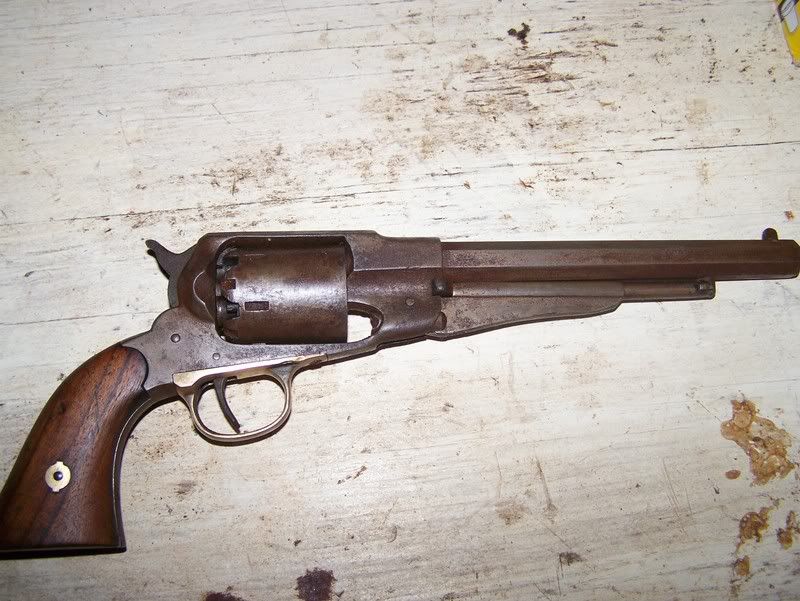waynes_world
Inactive
Im getting this gun today in a trade im making.(good one)
i have been doing research on the itnernet and have not been able to come back with much.
can anyone tell me what they know about this gun and if is the real deal and maybe how much its worth. any info will be greatly appreciated
info i know:
1858 Remington .44 caliber
4-digit serial number like 2,100
the guy i am getting it from told me that his grandfather passed and they are auctioning his estate so he would rather trade me the gun for my 32in lcd, desktop computer and a gold ring.(lol)
i guess thats all i know about it, anymore info? i have attached some pics. it looks authentic.
i have been doing research on the itnernet and have not been able to come back with much.
can anyone tell me what they know about this gun and if is the real deal and maybe how much its worth. any info will be greatly appreciated
info i know:
1858 Remington .44 caliber
4-digit serial number like 2,100
the guy i am getting it from told me that his grandfather passed and they are auctioning his estate so he would rather trade me the gun for my 32in lcd, desktop computer and a gold ring.(lol)
i guess thats all i know about it, anymore info? i have attached some pics. it looks authentic.

